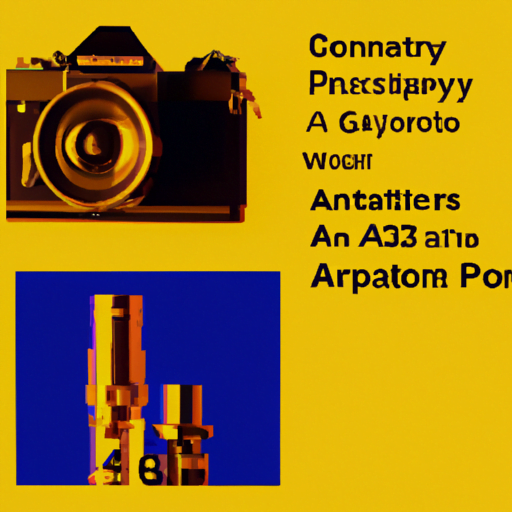
-
Table of Contents
Combining Typefaces: Tips for Successful Pairing

Choosing the right typefaces for a design project can be a daunting task. With thousands of options available, it’s easy to get overwhelmed. However, when done correctly, combining typefaces can create a visually appealing and harmonious design. In this article, we will explore some tips for successful typeface pairing, backed by research and industry best practices.
The Importance of Typeface Pairing
Typography plays a crucial role in design, as it sets the tone and communicates the message of a piece. When typefaces are combined thoughtfully, they can enhance the overall aesthetic and readability of a design. On the other hand, poor typeface pairing can lead to confusion and a lack of visual hierarchy.
According to a study conducted by the Software Usability Research Laboratory at Wichita State University, participants rated designs with well-paired typefaces as more visually appealing and easier to read compared to designs with mismatched typefaces. This highlights the importance of selecting the right combination of typefaces for a design project.
Understanding Typeface Categories
Before diving into the tips for successful typeface pairing, it’s essential to understand the different categories of typefaces. Typefaces can be broadly classified into four main categories:
- Serif: Serif typefaces have small decorative lines or strokes at the ends of characters. They are often associated with tradition, elegance, and formality.
- Sans-serif: Sans-serif typefaces do not have the decorative lines or strokes at the ends of characters. They are known for their clean and modern appearance.
- Script: Script typefaces mimic handwriting and have a flowing, cursive style. They are often used to convey elegance and femininity.
- Display: Display typefaces are highly decorative and are typically used for headlines or large text. They come in a wide range of styles and can add personality to a design.
Each typeface category has its own characteristics and can evoke different emotions. Understanding these categories will help in creating harmonious combinations.
Tip 1: Contrast is Key
One of the fundamental principles of typeface pairing is to create contrast between the selected typefaces. Contrast helps establish visual hierarchy and makes the design more engaging. Here are some ways to achieve contrast:
- Contrasting Styles: Pair a serif typeface with a sans-serif typeface to create a classic combination. The contrast between the traditional and modern styles adds visual interest.
- Contrasting Weights: Combine a bold typeface with a light or regular typeface to create contrast in weight. This contrast can help differentiate headings from body text.
- Contrasting Sizes: Use a larger typeface for headings and a smaller typeface for body text. This contrast in size helps establish a clear hierarchy and improves readability.
For example, a design project for a luxury brand could pair a serif typeface with elegant curves for the logo and headlines, while using a clean and modern sans-serif typeface for the body text. This combination creates a contrast between tradition and modernity, reflecting the brand’s values.
Tip 2: Consider Similarities
While contrast is important, it’s also crucial to consider similarities between typefaces to create a cohesive design. Here are some ways to consider similarities:
- Similar Proportions: Pair typefaces with similar x-heights or letter widths to create a harmonious combination. This helps maintain consistency and balance in the design.
- Similar Characteristics: Look for typefaces that share similar characteristics, such as rounded edges or geometric shapes. This creates a visual connection between the typefaces.
- Similar Mood: Consider the mood or emotion you want to convey with your design. Pair typefaces that evoke a similar mood to create a cohesive and unified look.
For example, a design project for a children’s book could pair a playful script typeface for the title with a rounded sans-serif typeface for the body text. Both typefaces share similar characteristics, creating a cohesive and child-friendly design.
Tip 3: Limit the Number of Typefaces
While it may be tempting to use multiple typefaces to add variety, it’s generally recommended to limit the number of typefaces in a design. Using too many typefaces can create visual clutter and confusion. A study conducted by the Nielsen Norman Group found that participants preferred designs with fewer typefaces, as they were easier to read and understand.
As a general guideline, aim to use no more than two or three typefaces in a design. This helps maintain consistency and prevents the design from becoming overwhelming. Remember, it’s better to have a cohesive and well-paired combination of typefaces than a chaotic mix.
Tip 4: Test for Readability
Readability is a crucial aspect of any design project. Even the most visually appealing combination of typefaces can fail if it hinders readability. Here are some tips to ensure readability:
- Test Different Sizes: Experiment with different sizes for headings and body text to find the optimal balance. Ensure that the text is legible at various sizes and distances.
- Consider Line Spacing: Pay attention to the line spacing or leading between lines of text. Sufficient spacing improves readability and prevents the text from appearing cramped.
- Avoid Similar Typefaces: Be cautious when pairing typefaces that are too similar in style or structure. This can lead to confusion and make it difficult for readers to distinguish between different elements.
Before finalizing a typeface combination, it’s essential to test it in different contexts and devices. This ensures that the design remains readable across various platforms and screen sizes.
Summary
Combining typefaces is an art that requires careful consideration and experimentation. By following these tips, designers can create visually appealing and harmonious combinations:
- Create contrast between typefaces through styles, weights, and sizes.
- Consider similarities in proportions, characteristics, and mood.
- Limit the number of typefaces to maintain consistency.
- Test for readability by experimenting with sizes, line spacing, and avoiding similar typefaces.
Remember, successful typeface pairing enhances the overall aesthetic and readability of a design, while poor pairing can lead to confusion and a lack of visual hierarchy. By understanding the different typeface categories and applying these tips, designers can confidently
